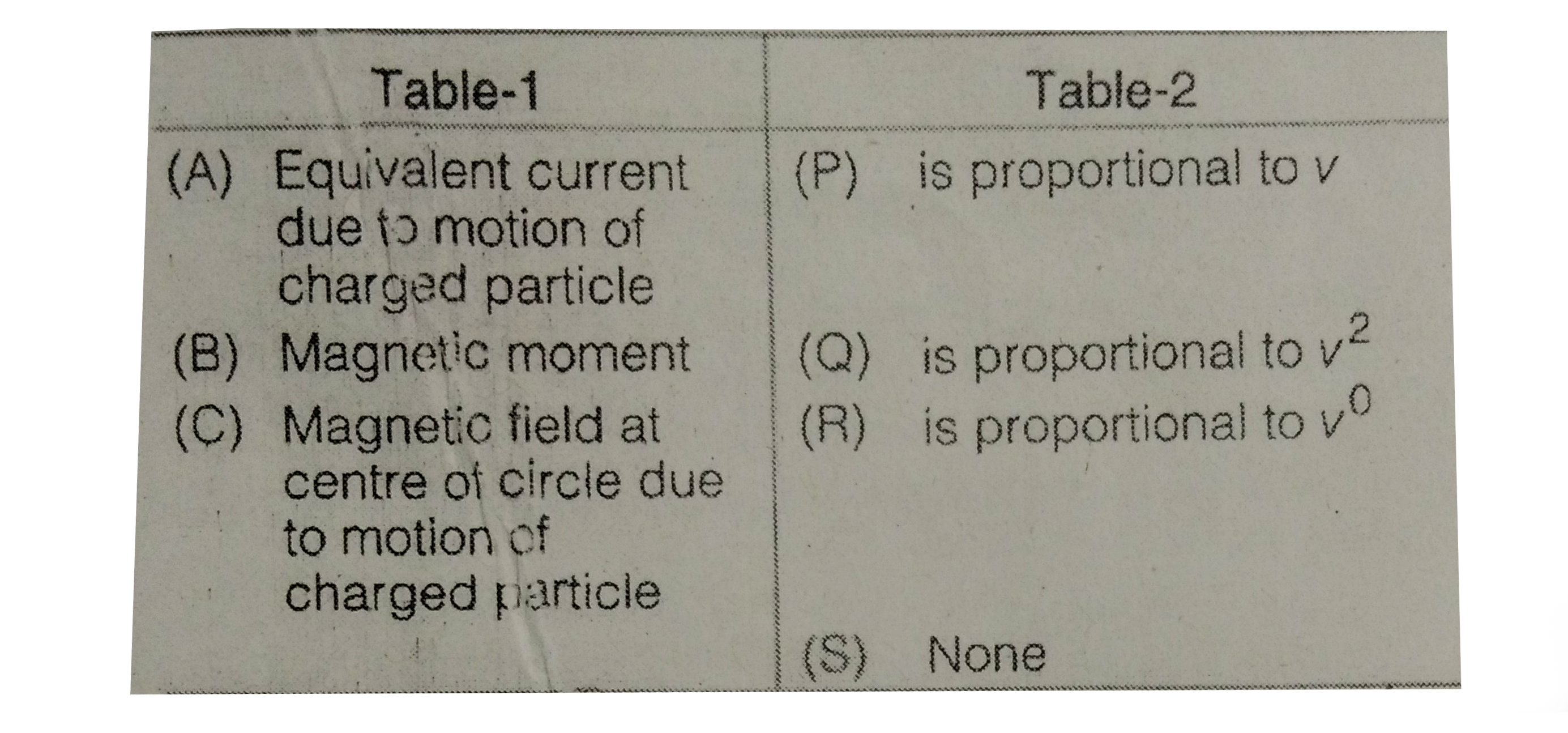A particle of mass m and having charge q is moving in a circular path of radius r in the presence of a uniform magnetic field. The particle breaks into smaller fragments X and Y of equal mass. The fragment X now has charge q3 and the fragment Y has charge 2q3. Immediately after the fragmentation, X comes to rest. The radius of the path of Y is now rY. The ratio rYr is ______________.
The correct Answer is:1.5
To solve the problem step by step, we will analyze the motion of the charged particle before and after fragmentation and apply the principles of conservation of momentum and the formula for the radius of a charged particle moving in a magnetic field.
Step 1: Understand the initial conditions
Initially, we have a particle of mass m and charge q moving in a circular path of radius r in a uniform magnetic field B. The centripetal force acting on the particle is provided by the magnetic force.
Step 2: Write the expression for the radius of the circular path
The radius r of the circular path of a charged particle in a magnetic field is given by the formula:
r=mvqB
where:
- m is the mass of the particle,
- v is the velocity of the particle,
- q is the charge of the particle,
- B is the magnetic field strength.
Step 3: Analyze the fragmentation
After fragmentation, the particle breaks into two fragments X and Y of equal mass m2. Fragment X has a charge of q3 and comes to rest, meaning its velocity vX=0. Fragment Y has a charge of 2q3.
Step 4: Use conservation of momentum
Before fragmentation, the momentum of the system is:
pinitial=mv
After fragmentation, the momentum of fragment X is 0 (since it comes to rest), and the momentum of fragment Y is:
pY=m2vY
By conservation of momentum:
mv=0+m2vY
This simplifies to:
vY=2v
Step 5: Calculate the radius of fragment Y
Now, we can find the radius rY for fragment Y using the formula for the radius of a charged particle:
rY=(m2)vY(2q3)B
Substituting vY=2v:
rY=(m2)(2v)(2q3)B
This simplifies to:
rY=mv2q3B=3mv2qB
Step 6: Find the ratio rYr
Now we can find the ratio of the radius of fragment Y to the original radius r:
rYr=3mv2qBmvqB=32
Final Answer
Thus, the ratio rYr is:
rYr=32
Initially, we have a particle of mass m and charge q moving in a circular path of radius r in a uniform magnetic field B. The centripetal force acting on the particle is provided by the magnetic force.
The radius r of the circular path of a charged particle in a magnetic field is given by the formula:
r=mvqB
where:
- m is the mass of the particle,
- v is the velocity of the particle,
- q is the charge of the particle,
- B is the magnetic field strength.
After fragmentation, the particle breaks into two fragments X and Y of equal mass m2. Fragment X has a charge of q3 and comes to rest, meaning its velocity vX=0. Fragment Y has a charge of 2q3.
Before fragmentation, the momentum of the system is:
pinitial=mv
After fragmentation, the momentum of fragment X is 0 (since it comes to rest), and the momentum of fragment Y is:
pY=m2vY
By conservation of momentum:
mv=0+m2vY
This simplifies to:
vY=2v
Now, we can find the radius rY for fragment Y using the formula for the radius of a charged particle:
rY=(m2)vY(2q3)B
Substituting vY=2v:
rY=(m2)(2v)(2q3)B
This simplifies to:
rY=mv2q3B=3mv2qB
Now we can find the ratio of the radius of fragment Y to the original radius r:
rYr=3mv2qBmvqB=32
Thus, the ratio rYr is:
rYr=32
Topper's Solved these Questions
- MAGNETIC EFFECTS OF CURRENT BOOK - VMC MODULES ENGLISHCHAPTER - MAGNETIC EFFECTS OF CURRENT EXERCISE - LEVEL 2
50 Videos
- MAGNETIC EFFECTS OF CURRENT BOOK - VMC MODULES ENGLISHCHAPTER - MAGNETIC EFFECTS OF CURRENT EXERCISE - JEE Main (Archive)
75 Videos
- MAGNETIC EFFECTS OF CURRENT BOOK - VMC MODULES ENGLISHCHAPTER - MAGNETIC EFFECTS OF CURRENT EXERCISE - LEVEL 0 (LONG ANSWER TYPE )
3 Videos
- LIQUIDSBOOK - VMC MODULES ENGLISHCHAPTER - LIQUIDSEXERCISE - JEE ADVANCED (LEVEL -2)
55 Videos
- MOCK TEST 1BOOK - VMC MODULES ENGLISHCHAPTER - MOCK TEST 1EXERCISE - PART I : PHYSICS (SECTION-2)
10 Videos
Similar Questions
A particle of mass m is moving on a circular path of radius r with uniform speed v , rate of change of linear momentum is
View SolutionA charged particle is moving in a circular path in uniform magnetic field. Match the following.

View SolutionA particle of mass 'm' is moving on a circular path of radius 'r' with uniform speed 'v'. Rate of change of linear momentum is
View SolutionA charged particle of mass m and charge q describes circular motion of radius r in a uniform magnetic field of strength B the frequency of revolution is
View SolutionA charged particle of mass m and charge q travels on a circular path of radius r that is perpendicular to a magnetic field B. The time takeen by the particle to complete one revolution is
View SolutionA particle of mass m and charge q is thrown in a region where uniform gravitational field and electric field are present. The path of particle:
View SolutionThe path of a charged particle moving in a uniform steady magnetic field cannot be a
View SolutionA particle of charge 'q' and mass 'm' move in a circular orbit of radius 'r' with frequency 'v' the ratio of the magnetic moment to angular momentum is:
View SolutionA particle of mass m carrying charge '+q1' is revolving around a fixed charge '−q2' in a circular path of radius r. Calculate the period of revolution.
View SolutionA particle of mass m and charge Q moving with a velocity v enters a region on uniform field of induction B Then its path in the region is s
View Solution
